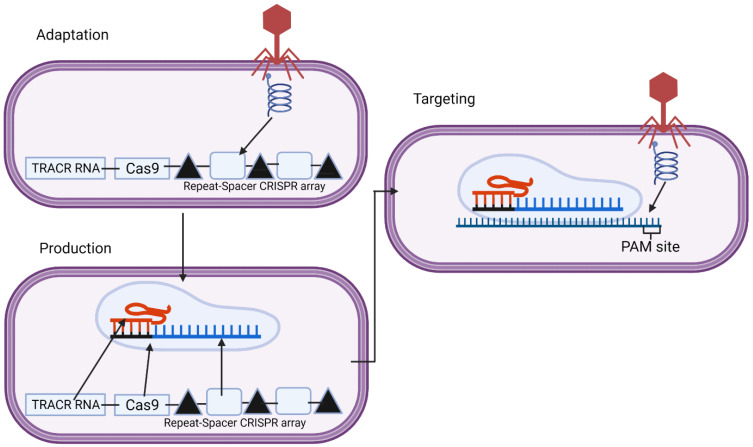Figure 1.
This is the three-stage process of how clustered regularly interspaced short palindromic repeats (CRISPR) works naturally against bacteriophages, with this diagram showing the type 2 system. The adaptation step occurs during the initial infection. A segment of the genome (spacer) is taken and put into the CRISPR array between two repeats. Upon future infection, the array is transcribed, forming the cRNA along with the trans-activating CRISPR RNA (tracrRNA) and the Cas genes, in this case, Cas9. These then come together to form a complex, which then binds to the region of the bacteriophage genome complementary to the spacer, and Cas9 cleaves the genome. Created with BioRender.com.

